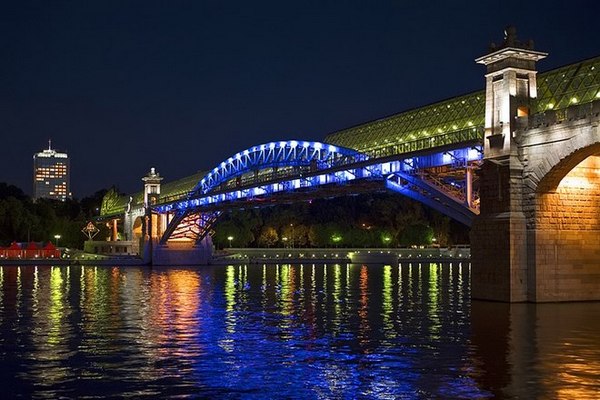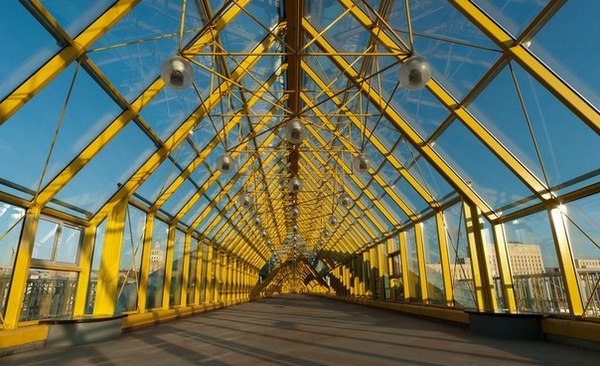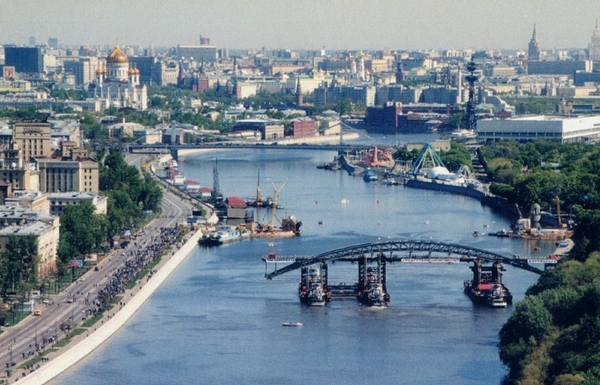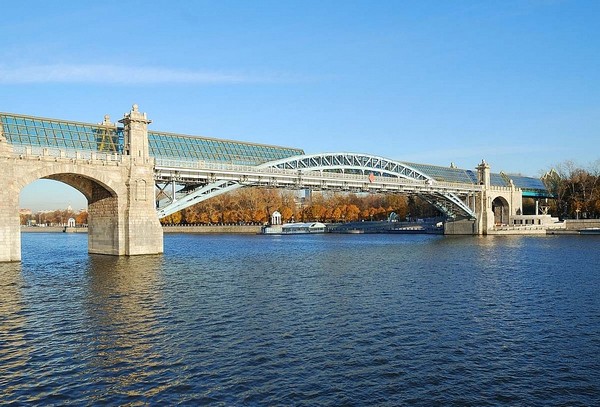St. Andrew's (Pushkin) Bridge
While carrying out reconstruction work on one of the sections of the small ring of the Moscow railway, builders encountered a problem. On their way was the century-old St. Andrew's Bridge, built at the beginning of the last century. The city authorities made a difficult decision: to preserve the structure, but, having removed it from its supports, move it downstream of the river, arranging new supports for the bridge. The structure, which is a monument of engineering and architectural art, found a second life: its main arch became the decoration of the new bridge.
History of St. Andrew's Bridge
The best bridge building engineers of that time worked on the most complex design solution for the Andreevsky Bridge: L. D. Proskuryakov and P. Ya Kamentsev. The architectural project belonged to the famous Russian architect A.N. Pomerantsev.
The arched surface parts of the bridge spans were about 135 meters in length. They rested on four supports, which had granite lining. Two of them, namely the coastal supports, were decorated with towers and equipped with bypass metal galleries. Even at the beginning of the last century, barge haulers moved along them, pulling ships and loaded barges along the Moscow River. The structures for the St. Andrew's Bridge were made of cast steel with rivets in the workshops of the Kama-Votkinsk plant.

Over its entire operational life, the bridge was repaired several times, but time turned out to be merciless: the load-bearing beams, rivets and other metal elements corroded. The condition of the structure made it necessary to reduce the speed of traffic, and besides, the old bridge did not make it possible to electrify the railway.

A new pedestrian bridge, the construction of which used the structures of the old Andreevsky, connected two embankments: Pushkinskaya and Frunzenskaya. Since the river is wider at the site of its construction, the designers provided an outrigger channel support. The main arch of the old bridge, weighing about one and a half thousand tons, was transported to the new location by three barges. By that time, there was already invaluable experience of such movement during the construction of the Bogdan Khmelnitsky Bridge.
The entire complex of construction and installation work took about 11 months, and the Pushkinsky Bridge was put into operation in 2000.

Pushkinsky or Andreevsky?
The new bridge was named after Pushkinskaya Embankment, which in turn had several names. Until the 20s of the last century it was called Andreevskaya, then it was renamed Neskuchnaya, and in 1937, in connection with the centenary of the death of the Great Pushkin, it began to bear the name of the poet. However, even on many maps of the city and in reference books the bridge is listed as Andreevsky. And when entering it from the Pushkinskaya embankment, you can see a sign telling about the history of the Andreevsky Bridge, which has become an integral part of the new bridge crossing.

